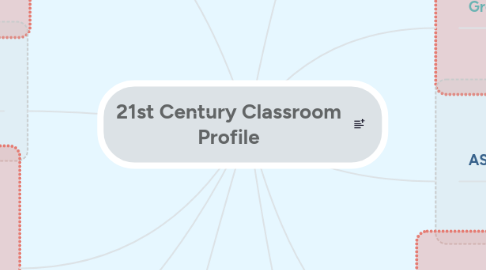
1. Classroom Environment
1.1. plan seating charts effectively
1.1.1. change throughout the year
1.2. develop classroom rules with students
1.2.1. hold students accountable to these
1.3. promote collaboration
1.3.1. planned groups and allow for some choice in groups
1.4. promote curiosity and asking questions
1.4.1. ensure students always feel comfortable asking questions and provide multiple chances to do so
1.5. classroom meetings
1.5.1. open and mediated discussions
1.6. strong classroom routines
1.6.1. posting daily schedules for students
1.7. provide frequent positive feedback
1.8. offer flexible seating
2. English Language Learners
2.1. provide visual prompts
2.2. allow use of manipulatives
2.3. provide extra time
3. ADD/ADHD
3.1. chunking material into smaller sections
3.1.1. segment assignments
3.2. tactile use of manipulatives
3.3. using math in DPA
3.4. providing collaborative opportunities
3.5. increase interactive lessons
4. Gifted
4.1. have additional work prepared for students
4.2. provide more challenging work
4.3. allow time to explore interests
4.4. give teaching opportunities
5. Learning Disabilities
5.1. provide modifications to allow for scaffolding previous knowledge
5.2. provide extra time
5.3. encourage collaboration with other students
5.3.1. build confidence in working with peers
5.3.2. allows for learning and teaching opportunities of all students
5.4. provide multiple strategies
5.4.1. allow students to explore own strategies
5.5. provide scribing if necessary
5.6. use of technology and manipulatives
6. All students can benefit from UDL and a Growth mindset within the classroom. Setting up a positive classroom environment will also help when it comes to math and collaboration between students. Being able to integrate technologies into the classroom that aid with math also encourage students
7. Universal Design for Learning
7.1. multiple means of representation
7.1.1. visual
7.1.2. audio
7.1.3. text
7.1.4. hands on learning (manipulatives)
7.2. engagement
7.2.1. allow for choice
7.2.2. give relevant examples
7.2.3. allow for collaboration
7.3. action and expression
7.3.1. access to tools and technology
7.3.2. multiple means of expression
7.3.3. allow for goal setting
8. Growth Mindset
8.1. promote a learning culture
8.1.1. this includes a positive outlook on math
8.2. a can do attitude
8.3. promote learning from mistakes
8.4. allow for discussions
9. ASD
9.1. connect mathematical concepts to specific interests
9.2. connect with visual and verbal representation
9.3. use lists
10. Non Verbal
10.1. use of visual cues
10.2. allowing use of technology, such as ipads/chromebooks to complete assignments
10.3. speak slowly when giving instructions
10.4. use mind maps
11. differentiated instruction
11.1. create tiered lessons
11.2. group students based on knowledge
11.3. include hands on work
11.4. provide safe and supportive classroom environment
11.5. provide multiple means of representations within a lesson
11.5.1. text
11.5.2. visual
11.5.3. audio
11.5.4. hands on
